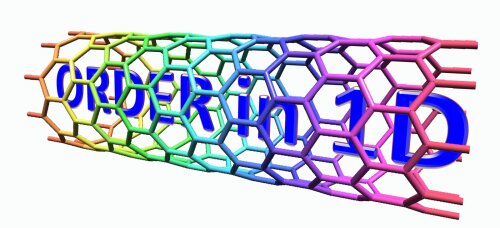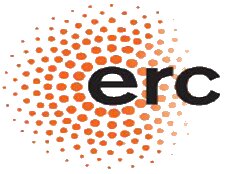Sofie Cambré


In my research I focus on the characterization of various nanomaterials with optical and magnetic resonance spectroscopy. The most important research topics are briefly described below:
The unique one-dimensional hollow structure of SWCNTs provides an excellent template for aligning molecules in one dimension, by encapsulating them in the interior SWCNT channel. Many different molecules have been encapsulated, from water to various solvent molecules that can tune the optical properties of the SWCNTs and functional dye molecules. In particular the latter can photosensitize the SWCNTs (through energy transfer), dope the SWCNTs (through electron transfer) or can create new properties by the alignment of the molecules inside the SWCNTs (e.g. phase transitions, nonlinear optical properties etc. ).


Further reading:
Diameter-dependent stacking of squaraine dye molecules inside SWCNTs.
Diameter-dependent dye filling and energy transfer
Alignment of dipolar dyes inside SWCNTs
Filling of SWCNTs with water
Phase transitions inside SWCNTs
SWCNT synthesis methods each time provide mixtures of different SWCNTs, with very different optical and electronic properties. To embed SWCNTs in actual applications, sorting of SWCNTs by their helicity and diameter (i.e. their chiral structure) and thus also by their peculiar optical and electronic properties is essential. This can be achieved in many ways, using different techniques such as density gradient ultracentrifugation (DGU) and aqueous two-phase extraction (ATPE).
Further reading:
Systematic ATPE separations: the role of sodium deoxychoalte
Systematic ATPE separations: the role of bile salt surfactants
Sorting SWCNT enantiomers in the large diameter regime
Benchtop ATPE separations
Role of surfactants in ATPE separations
Separation of empty and filled SWCNTs by DGU
By changing the endohedral content of SWCNTs, their optical properties can be highly infleunced, e.g. shifting the optical transitions and vibrational frequencies of the SWCNTs. This is investigated in a chirality-dependent manner. Also the intrinsic properties of SWCNTs are being investigated by optical spectroscopy.
Further reading:
Luminescence properties of empty and filled SWCNTs
Inner dielectric constant influence the optical properties of SWCNTs
The hollow structure of SWCNTs can also be used to synthesize linear carbon chains and graphene nanoribbons, which can then be characterised spectroscopically by wavelength-dependent Raman spectroscopy. Also the outer wall of the SWCNTs can be used to create new heterostructures. Peculiar examples of such heterostructures are double-wall carbon nanotubes, for which we revealed an efficient inner-to-outer-wall energy transfer.
Further reading:
Graphene Nanoribbons
Linear carbon chains
1D van der Waals Heterostructures: a review
Inner-to-outer-wall energy transfer in DWCNTs
ODMR combines the spin-sensitive magnetic resonance technique with optical spectroscopy to very sensitively detect triplet excitons in SWCNTs. The ODMR signals not only confirm the existence of the triplet excitons but also reveal their specific properties, such as the specific strength of the spin-spin interactions (through the zero-field splitting) and the specific symmetry and lifetime of the triplet excitons.
Further reading:
Triplet Excitons in SWCNTs
Electron Paramegnetic Resonance Spectroscopy comprises various methods to investigate unpaired electrons, such as present in paramagnetic molecules. Funcionalisation of SWCNTs with paramagnetic molecules, either encapsulated in their interior or adsorbed on the SWCNT walls, thereby provides access to the interior and exterior walls of the SWCNTs. Polarity, orientation and distance between the encapsulated molecules can be revealed, and we showed that the specific interaction of molecules with the SWCNT wall can reveal the metallic-to-semiconductor ratio in SWCNT sampls. More recently we are also focussing on investigating triplet excitons inside SWCNTs usig Optically Detected Magnetic Resonance Spectroscopy.
Further reading:
Encapsulation of paramagnetic molecules
Metallic-to-Semiconductor ratio
Transport of current through semiconductor devices are related to the spin properties of the charge carriers; which can be trapped in defects within the device. Electrically Detected Magnetic Resonance Spectroscopy can help to unravel the origin of these defects and as such provide useful information to enhance transport in such devices.